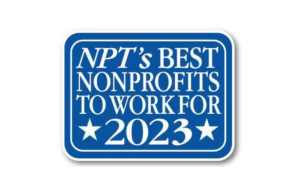The more money philanthropies have, the more good they can do. This sentiment offers a disturbing dichotomy for philanthropic-focused investments: whether to meet financial goals now by (almost) any means necessary so they can fund good works later.
A new report from the Nathan Cummings Foundation, a New York City-based philanthropy that seeks to create a just, vibrant and sustainable society, challenges this dichotomy. “The report addresses this skepticism by demonstrating the potential for mission-aligned investing to enhance mission impact while continuing to meet financial goals,” the authors wrote.
For leadership at the Nathan Cummings Foundation, mission-aligned investing incorporates environmental, social and governance (ESG) data; diversity, equity and inclusion (DEI) information; investment opportunities led by women or people of color; mission- and program-related investments and impact investing. The guide includes input from outsourced chief investment officers – fund managers and other financial counselors – at 115 investment firms.
The report authors don’t expect philanthropies to shift their investments out of the goodness of their leadership’s hearts. As they wrote, incorporating data such as ESG considerations can give greater insight into the health of an investment opportunity. Funds managed by women or people of color are often underinvested, meaning the likelihood of finding hidden gems among them is heightened. And societal and environmental benefits are not feel-good dividends: they can directly impact the way employees at philanthropies, and the communities they serve, live.
In fact, one of the report’s main findings was that investments screened for societal considerations did not underperform the returns of others, nor were they more volatile.
The authors’ research also revealed that investment firms that gave societal concerns greater weight in their decisions tended to have been launched within the last 20 years, although their founders and leaders were often highly experienced. But because these firms placed higher value on the investment counsel of women and people of color who did not come up through traditional firms, they were more likely to generate innovative investment thinking.
Investment firms that baked diversity, equity and inclusion considerations into their hiring and management practices were also more likely to host more-satisfied employees and experience higher levels of profitability and growth. They also were more likely to make investments that prioritized societal benefits, thereby creating social good even without a philanthropy having to withdraw funds.
These investment firms were less likely to fall prey to a financial community pitfall: they, and their investment choices, were more closely aligned with their investors’ values. Unfortunately, these firms make up a small percentage of the total investment community both in sheer numbers and investment strength.
Trying to evaluate a firm’s commitment to social impact, however, presents another challenge. While some firms use standard ESG measurements, most have not fully implemented these platforms. As a result, philanthropies are often faced with “black box” systems that are hard to compare, or even evaluate for their own efficacy.
Overall, the research found, there is considerable room for “impact investors” – those seeking to maximize social good along with their returns – to incorporate social, racial or economic justice into their investment activities, the report found. Even social good causes that lend themselves to more measurable outcomes, such as environmental-focused investing, fail to express the impact of these actions on racial or economic justice concerns.
The full report is available here: https://impact.nathancummings.org/










